
VEGETATION MANAGEMENT
Plants to monitor
This list includes invasive and/or toxic species that are present on the site or in the area. Please report the locations of these plants to the Site and Facilities Manager or the Quartermaster. Do not attempt to remove these plants without coordinating with the Site and Facilities Manager or designated team leaders.
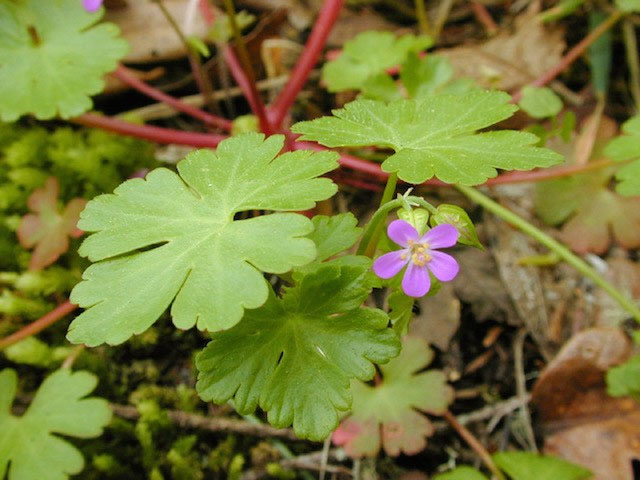
Shining Geranium (Geranium lucidum)
The weed of the month (from King County, Washington)
Invasive Plant Atlas
Wikipedia
This highly invasive non-native annual plant is found in many locations on site. Eradication efforts are ongoing. Contact the Site and Facilities Manager for information on how to join the team.
*************************************************************
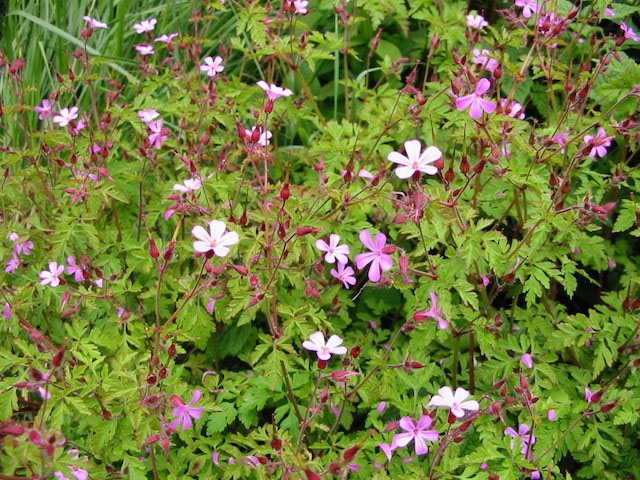
This non-native, invasive annual related to Shining Geranium is widespread on the OCF site.
***********************************************************
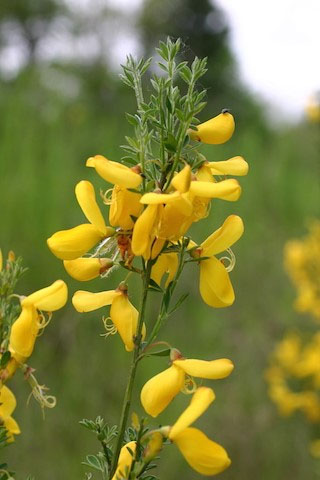
Scotch Broom
(Cytisus scoparius)
This non-native species has been largely eradicated from the OCF site but is abundant at the Outer Limits (aka winery). It can be hand-pulled in the spring. Seeds can persist in the soil for decades.
**********************************************************
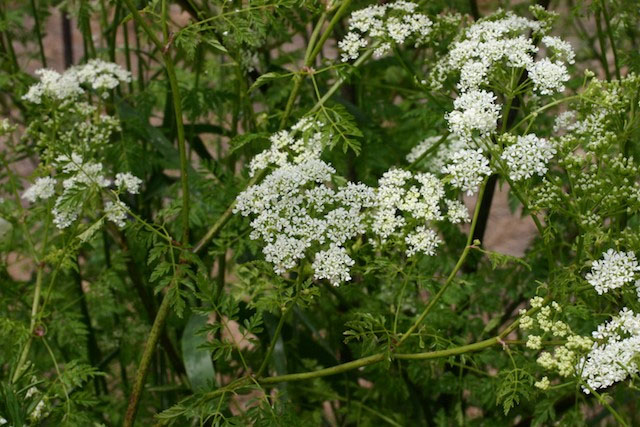
Poison hemlock (Conium maculatum)
This non-native invasive biennial is widespread in the Willamette Valley, occurring in disturbed wet areas. The foliage and roots are deadly poisonous if ingested. Not known to be present on OCF property.
**********************************************************************
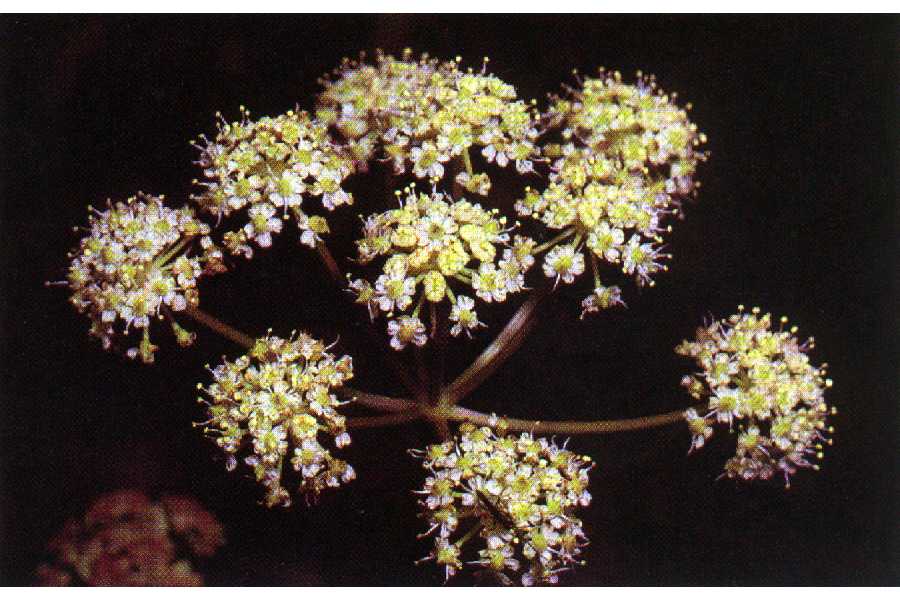
Water Hemlock (Cicuta douglasii)
This native wetland perennial is called by the USDA "the most violently toxic plant that grows in North America." It may be confused with wild parsnips or carrots. Avoid all contact. Ingestion of any part will likely end in death.
***********************************************************************
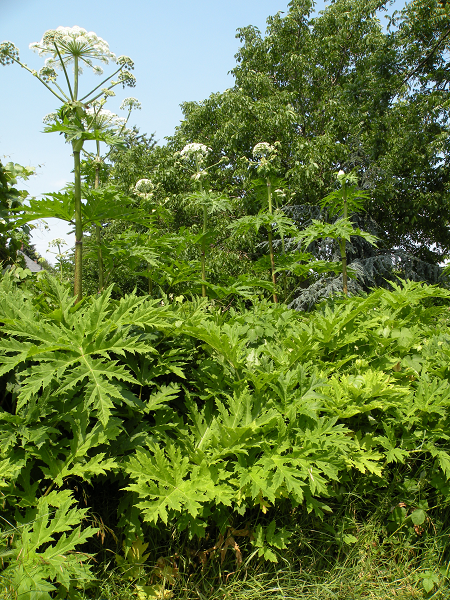
Giant Hogweed (Heracleum mantegazzianum)
This highly toxic non-native perennial plant has been found in a few locations in Lane County but has not been seen on OCF property. Do not touch it! The sap can cause severe burns or blindness.
**************************

Death camas (various species )
These native perennials are widespread. The foliage and bulbs are toxic if ingested. They may grow in a stand of edible camas and may be readily distinguished from blue-flowered camas when in bloom but not in dormancy, when camas is most likely to be harvested for human consumption. They should be removed from stands of camas that may be used for food.
***********************************************************************
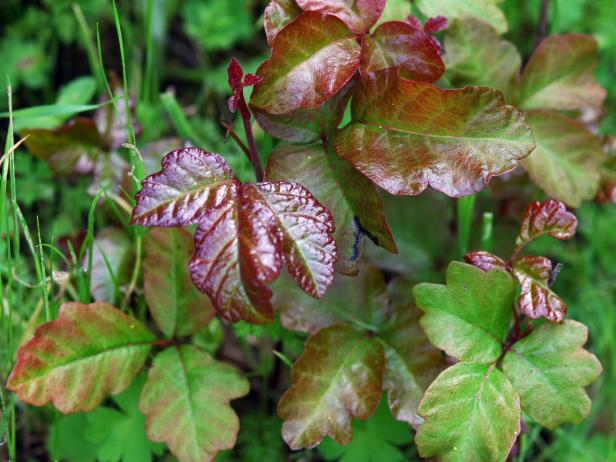 (photo by HGTV)
(photo by HGTV)
Poison Oak (Rhus diversiloba, aka Toxicodendron diversiloba)
Skin contact with this native perennial vine may result in burning rashes. It is widespread in the dry uplands of the OCF site.
***********************************************************************
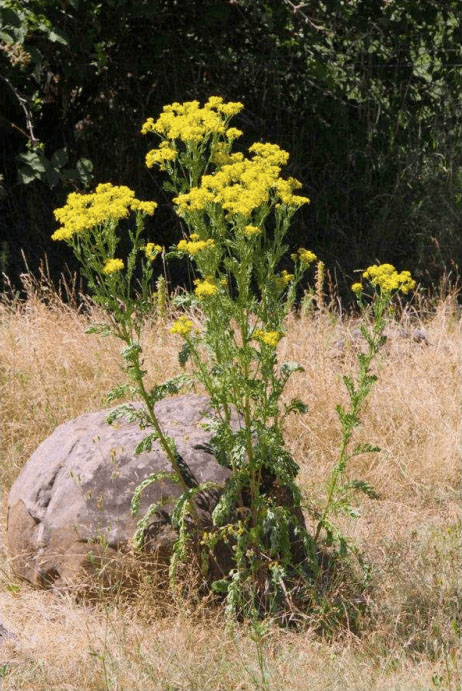
Tansy Ragwort (Jacobaea vulgaris, aka Senecio jacobaea)
This invasive non-native biennial/perennial is toxic to most grazing animals. It thrives in sunny, disturbed areas and will regenerate from crowns or root fragments left after mowing or tilling. Once widespread and abundant in western Oregon, its populations have been greatly reduced by the introduction of the cinnibar moth, a flea beetle, and a seed head fly. Any plants with moth larvae or signs of the flea beetle or seed head fly should be left undisturbed to allow the insects to complete their life cycle.
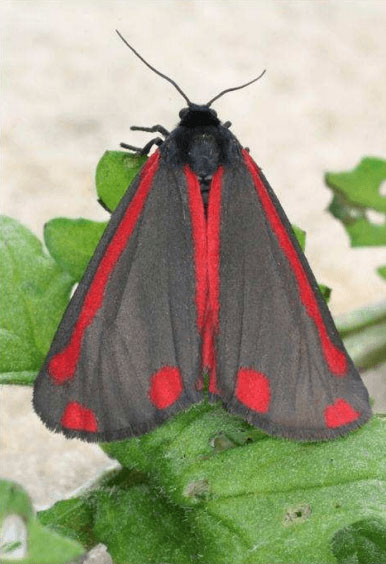 cinnibar moth and larvae
cinnibar moth and larvae 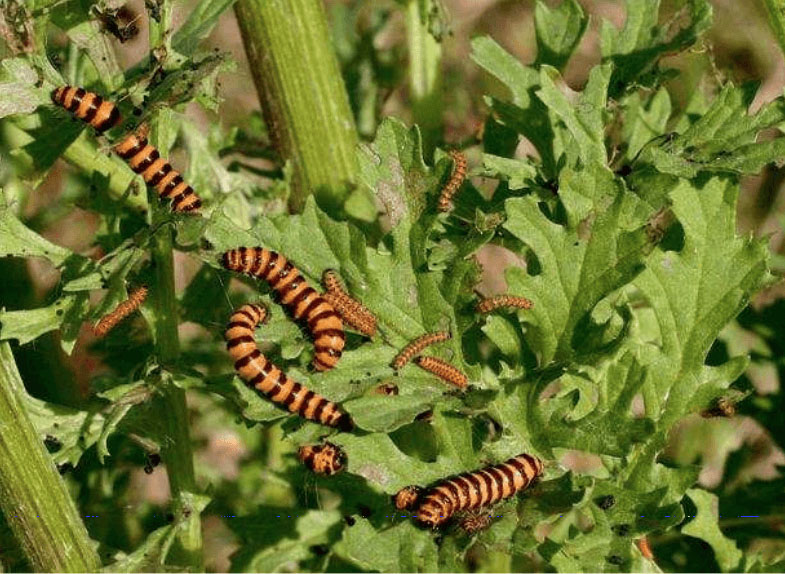
************************************************************************
General Interest Sources
Oregon Weedmapper (Oregon Department of Agriculture)
iMap Invasives, a GIS-based collaboration to document invasive plant locations
Invasive Plants List (Native Plant Society of Oregon, Eugene Chapter)
Plants Database (Natural Resources Conservation Service)
Plants for Pollinators (Natural Resources Conservation Service, .pdf 402 kb)
***********************************************************************
LUMP Manual: Vegetation Chapter
Description
The site includes mixed hardwood and conifer forest, grassland, wetland and riparian zones, and path and stage area. Native vegetation (including rare or endangered plant species), exotic plants (some invasive or pest species), lichens, fungi, and algae inhabit the site. The Fair recognizes our stewardship obligation to preserve our section of the rapidly–disappearing Willamette Valley riparian forest and floodplain. The Fair site serves as an important wildlife refuge and corridor linking the Fern Ridge/West Eugene wetlands, the Long Tom watershed, and Coast Range habitats.
Nursery areas are used to propagate vine maple, bigleaf maple, red osier dogwood, alder, and other species for use on site. Alice’s Wonderland includes gardens, orchard, and a greenhouse.
Forest communities include areas dominated by oak overstory, ash-slough sedge stands, ash-dominated wetlands, black oak-fir-pine uplands, a cascara-wild pear stand, and a transition strip dominated by black cottonwoods.
Grasslands include post-cultivation native wet prairie (e.g., Trotter’s Field), foxtail-dominated areas (e.g., Crafts Lot), old pasture (e.g., Dead Lot), and fescue-dominated areas (e.g., Chela Mela Meadow).
Wetlands and riparian areas include zones of spirea, willow, and cattail (e.g., Indian Creek and south side of Miss Piggy’s Lot); grasses and forbs on white clay (Miss Piggy’s Lot); old channel wetlands; upland levees (Long Tom River); old Indian Creek channel; a sphagnum bog; Indian Creek constructed channel; beaver ponds; and beaver-flooded uplands.
Path/lawn areas can be categorized into those areas with good soil (e.g., Main Stage, River Loop, Left Bank, Dragon Plaza) and those with poor soil (e.g., East 13th). Shaded areas and frequently-flooded areas occur over both good soil and poor soil.
Goals
-
Shade
-
Wildflowers
-
Dust control
-
Dense understory
-
Barefoot-friendly path
-
Control of sheet and drip erosion
-
Comprehensive plant list with mapped sites
-
Vegetation buffers between campsites and paths
-
Healthy, diverse native plant/fungal/algal/lichen communities
-
Full cycle of germination, growth, senescence, death, and decay
-
Control of invasive non-natives
-
Solar access in selected areas
Implementation
-
Plant shade trees
-
Plant wildflowers
-
Protect what we have
-
Prohibit brush cutting
-
Revegetate bare ground
-
Foster native vegetation
-
Use controlled burns
-
Remove hazardous limbs
-
Foster oaks over conifers
-
Leave large logs to decay
-
Plant understory vegetation
-
Manage for wildlife habitat
-
Leave organic debris and duff
-
Propagate native plants and trees
-
Enhance Indian Creek vegetation
-
Add soil to paths where necessary
-
Continue mowing the parking lots
-
Schedule mowing to allow seed set of native plants
-
Control invasive and undesirable plants
-
Identify, designate, map, and protect green zones
-
Perform regular plant inventories and maintain a database
-
Redesign lofts and booths to minimize impact on vegetation
-
Consider planting dense vegetation along the Long Tom River
-
Implement upland forest management plan to maximize biodiversity
-
Monitor and maintain solar access
******************************************************************************









 (photo by HGTV)
(photo by HGTV) 
 cinnibar moth and larvae
cinnibar moth and larvae 